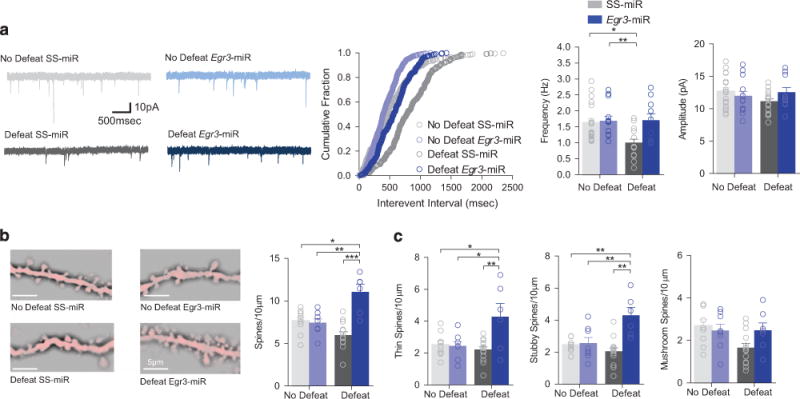Figure 2.

D1-MSN-specific knockdown of Egr3 prevents stress-induced changes in mEPSC frequency. (a) A cumulative probability plot shows a significant rightward shift in the distribution of inter-event intervals for mEPSCs in susceptible mice (No defeat SS-miR vs Defeat SS-miR, P<0.0001). mEPSC frequency significantly decreased by defeat was blocked by Egr3-miR (virus, P<0.01, defeat, P<0.05, N(n) = 3–4(10–20)) and mEPSC amplitude remained unchanged by defeat or Egr3-miR (P>0.05, Mice(cells), N(n) = 3–4(10–20)). (b) Representative dendrites are shown. Total density of spines was increased in D1-MSN Egr3-miR-defeated mice (P<0.0001; 5–14 mice per group). (c) Thin spine density (P<0.01; 5–14 mice per group) and stubby spine density (P<0.01; 5–14 mice per group) were increased by Egr3-miR and defeat. Mushroom spine density remained unchanged (P>0.05; 5–14 mice per group). Exact statistics can be found in Supplementary Table 1.
